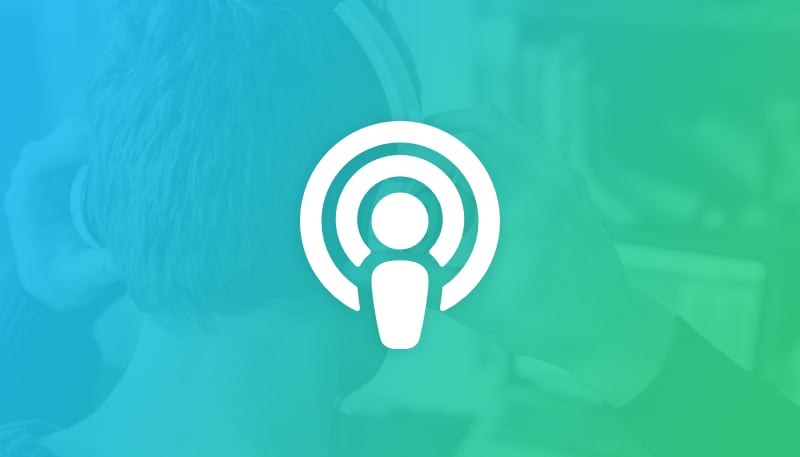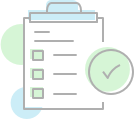
How would you like to double the number of freelance clients for your business?
While there are entire courses dedicated to this subject, one simple tip that I received a long time ago has made a clear difference in how many clients end up choosing me over the competition.
Interested in knowing what this is?
First, I’ll tell you what I did before, this may sound familiar:
- I would advertise my freelancing services through advertisements and SEO through my blog.
- Potential clients would contact me letting me know that they have a potential project they are looking for help with.
- I was often one of a couple contractors that they were talking to.
- After some emailing back-and-forth, they’d make their decision based off of the cheapest price.
Either I was the lucky winner (because I was cheapest, so am I really winning then?), or someone else would get the contract, and it wouldn’t matter what my estimate was because this project netted me $0 and a few hours of prospecting that led to nowhere.
There is a better way.
As I just mentioned, when the cheapest freelancer wins the project, generally everyone loses:
- The client isn't usually getting the best quality work.
- The freelancer isn’t getting paid a competitive rate.
- The other freelancers walk away without a contract.
So, the better way is to land the job, without being the cheapest, and providing the best service to your client.
The single best way to accomplish this is to pick up the phone as early in the process as possible.
But wait…
Emailing them is easier and keeps better records.
I don’t have their phone number.
I don’t want to waste time calling everyone who is remotely interested in working with me.
Those were the excuses I had early on in my freelance career. However, once I started calling my leads as early as possible, a few things started to happen:
They Start the Process to Know, Like, and Trust You
Assuming the phone call goes well, you begin building a relationship with them early on. The more phone calls you have with them, the more you show them that you are available, can communicate well, and are professional.
People ultimately buy from those that they know, like, and trust. When your communication with your potential clients is limited to emails, they don’t know your voice, it is harder for your personality to shine through in words, you look just like everybody else they are talking to.
You Can Discover What Their True Needs Are
Their initial email to you might say that they need a new website for a event they are running, but when you get them on the phone, you can ask them what their goals are for this project. Are they trying to show community involvement? Are they looking to acquire new leads through this event? Are they primarily trying to attract sponsors? Only by having a conversation with them can you dig into what their true goals are for this project, beyond the simple deliverable they are asking you for.
Doing this all over email is way less effective than sitting with them on the phone and letting them discuss their goals.
They’ll Remember You
Even if you do not land this particular project, by having a voice conversation with your potential clients as a freelancer, you will leave a deeper impression, and will be more likely to be contacted for future projects or given as a referral to their network. This is one of those habits that will compound over time: the longer you are a freelancer who has these conversations with potential clients, the more work will trickle in as time goes on based off of referrals and previous conversations.
For example, I had a client a long time ago that had a conversation with me, where I learned the ins and outs of what their business needed, and came up with a plan for implementing their goals. In the end, they ended up going with another team who was much cheaper than I was.
Fast-forward about a year later, and they came back to me explaining how the project ended up being a failure with the other team, and that they wanted to hire me now because they remembered how much I seemed to understand their needs. A classic example of where a “cheaper” solution ends up being way more expensive!
Since that project I have learned how to be even more effective with my proposals so that they are steered even further away from the cheapest options. However, that is the subject of a later post!
Tactics for Getting them on the Phone
As I mentioned before, most of my leads begin as an email where they let me know that they are looking for a freelancer like myself. In response, I try to fire back an email within hours of receiving theirs to initiate the sense of professionalism and reliability, with something similar to the following:
Dear [Client], thanks for reaching out about [Project]. This seems to be exactly the type of work that I do, and have helped clients reach success with before. When would be a good time to set up a phone call to learn more about your organization and this project?
Would sometime Wednesday morning work for you?
Sincerely,
[Yourname]
This short email accomplishes the following:
- Specifically mentioning the client by name and describing their project in the first sentence lets them know that this isn’t an automated response.
- You assure them that you could be the right one for the job, while leaving an easy out with the word “seems”.
- You let them know that the phone call is simply to learn more about their project, something that I’m sure they’d love to talk about! Contrast this with: ”When would be a good time to set up a phone call so I can tell you more about our services? The subtle difference here is that in the original question we are putting their needs first, in the alternate sentence we are focusing on our own needs to be heard. Nobody likes sales pitches, but they love to hear about solutions.
- You lead in with a suggested time. This simply gets the ball rolling easier and prompts them to respond relatively quickly. If you simply said “When would you like to talk?” they could get back to you in a month, but suggesting a time within a week generally means they’ll give you some sort of response right away.
What to Say on the Phone
Now that you’ve gotten a phone meeting set up, make sure you call them on time. Set up a reminder, put it on the calendar, do whatever you need to in order to keep that appointment on time.
Start things off by thanking them for considering you for the project, show them your enthusiasm for learning more about the project. Again, this is simply letting them know that you are interested in learning more, but you can easily back out once you’ve learned that this project isn’t for you.
Try to refrain from talking about yourself at this point, but instead start to ask them about their business and project. What you want to avoid is going on and on about some area of your expertise as a freelancer that actually isn’t a concern of theirs.
Now, if they ask you questions, then feel free to talk about yourself as much as is necessary to answer their concerns. This way you can be sure to talk about yourself only to the extent that it relates to solving their problems, and not simply tooting your own horn.
If, by the end of the conversation, you feel that this is a good project for you to pursue, and feel that you can offer a good solution for them, then let them know that. It can be helpful to mention how you’ve done something very similar for a client in the past and what the results of that project were.
Following Up After the Call
Within a few hours of the phone call, be sure to follow up with an email that thanks them again for the call, lists any bullet points of the conversation that are worth recording on paper, and suggest a next step. You may even want to attach a case study if you have one available of a previous client that relates to this project.
Here is what a follow-up email might look like:
Dear Jane, it was great talking with you on the phone today about re-designing your website. It sounds like you really value a focus on increasing conversions of visitors from what you currently are experiencing, so we will be sure to keep this as a priority throughout the project.
Over the next few days I’ll be putting together a proposal for your consideration, and will send that over to you by this Friday.
For now, I’ll leave you with the attached case study of how we achieved success with a project similar to yours with another client. As always, let me know if you have any questions or would like to discuss something further.
Sincerely,
[Yourname]
In this email, we accomplish the following:
- You repeat back to them something that they said during the conversation to show that you understand where they are coming from.
- You let them know your next steps, and put a timeframe on it. Again, this just shows that you are a professional and gives you another opportunity to keep your work and show them that you are organized. It is surprising just how many “professionals” are sloppy in this regard.
- You give them an optional bonus nudge towards accepting your proposal by providing them with a case study. If you don’t have case studies, maybe even a single PDF with a few testimonials from past clients. If you don’t have those, stop reading this now and start emailing your past clients and ask for them.
Does this Really Matter?
Yes. Yes it does. Some of my favorite projects are the ones where I know that I am the most expensive option, but they chose me anyway because none of the other freelancers took the time to build the relationship this early on.
Following the steps outlined in this article allows you to create a proposal that focuses on the client’s exact needs (because you are using their own words when you write out your solutions). You’ve also proven through a few points of contact that you are organized, are a solid communicator, and can be trusted to carry this project through to successful completion.
Sound good? Great! Now, let's focus on how to attract more freelance clients so you can schedule those phone calls.







